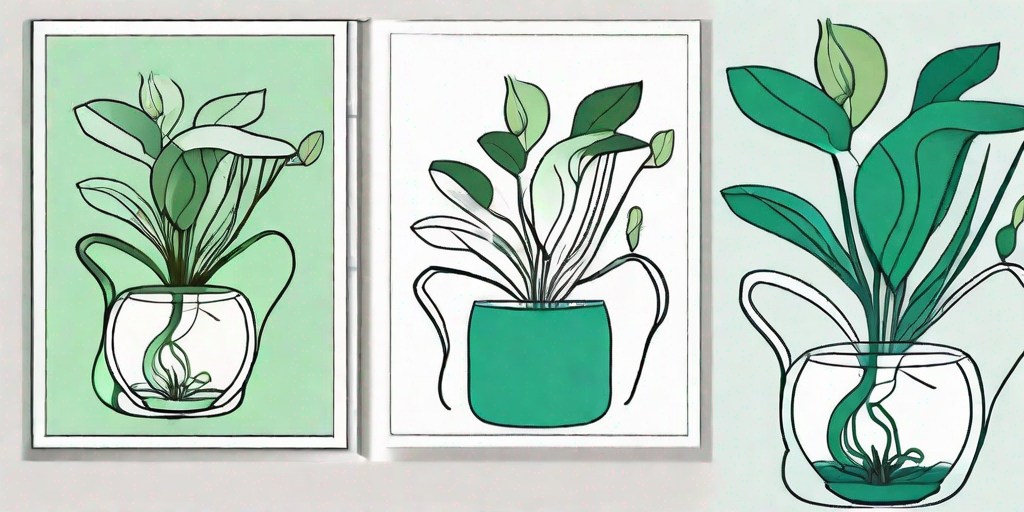
Welcome, green-thumbed enthusiasts and curious botanists, to the world of carnivorous flora! Today, we're diving into the mysterious realm of pitcher plants, those fascinating, insect-guzzling wonders of nature. If you've ever wondered how to propagate these intriguing specimens, you're in the right place. So, buckle up, plant lovers, it's time to get our hands dirty!
Understanding Pitcher Plants
Before we delve into the propagation process, let's take a moment to understand our subject. Pitcher plants, or Nepenthes if you want to get scientific, are a group of carnivorous plants that have evolved to thrive in nutrient-poor soil. They've developed a rather gruesome way of supplementing their diet - by luring, trapping, and digesting insects in their pitcher-shaped leaves. It's a bug-eat-plant world out there, but not for these guys!
There are over 170 species of pitcher plants, each with its own unique characteristics. Some are terrestrial, others are climbers, and some even produce the largest pitchers of any carnivorous plants. But don't worry, they're not big enough to trap humans... yet.
The Art of Propagation
Propagation, for those new to the gardening game, is the process of creating new plants from a variety of sources - seeds, cuttings, bulbs, and other plant parts. With pitcher plants, we're going to focus on two methods: seed propagation and vegetative propagation.
Now, before you start imagining yourself as a mad scientist, creating an army of carnivorous plants, let's set some expectations. Propagation can be a slow process, requiring patience and care. But don't worry, the end result is worth the wait!
Seed Propagation
Starting pitcher plants from seeds can be a rewarding process, but it's not for the faint-hearted. It requires time, patience, and a bit of luck. But hey, who doesn't like a challenge?
First, you'll need to get your hands on some seeds. These can be purchased online or harvested from mature plants. Once you have your seeds, they'll need to be sown on a suitable growing medium. Peat moss mixed with perlite or sand is a good choice.
Vegetative Propagation
If waiting for seeds to germinate isn't your cup of tea, vegetative propagation might be more your speed. This method involves taking cuttings from a mature plant and encouraging them to grow roots. It's like cloning, but without the ethical dilemmas.
For this method, you'll need a mature pitcher plant, a sharp knife, and a pot with a suitable growing medium. The cutting should be taken from a healthy, vigorous part of the plant, and should include at least one node (the point where a leaf joins the stem).
Caring for Your New Plants
Once you've successfully propagated your pitcher plants, the real fun begins - caring for your new carnivorous babies. Pitcher plants require a bit more care than your average houseplant, but don't worry, we've got you covered.
Firstly, these plants love high humidity and lots of light. They're not fans of tap water, so rainwater or distilled water is best. As for food, well, they'll take care of that themselves. Just remember to keep any small pets away!
With the right care and attention, your pitcher plants will thrive, providing a fascinating addition to your home or garden. And who knows, you might even develop a taste for bug-catching plants!
FAQs
Are pitcher plants dangerous to humans?
No, pitcher plants are not dangerous to humans. They are carnivorous, but their prey is limited to insects and small invertebrates. So unless you're an ant, you have nothing to worry about.
Can I grow pitcher plants indoors?
Yes, pitcher plants can be grown indoors, provided they have enough light and humidity. A sunny windowsill and a regular misting can create an ideal environment.
Do pitcher plants need to be fed?
Pitcher plants catch and digest their own food, so there's no need to feed them. However, they do appreciate a good watering with rainwater or distilled water.
Conclusion
So there you have it, the foolproof guide to propagating pitcher plants. Whether you're a seasoned botanist or a budding gardener, these fascinating plants offer a unique and rewarding gardening experience. So why not give it a try? After all, who wouldn't want a carnivorous plant in their collection?
Remember, the key to successful propagation is patience, care, and a sense of adventure. So go forth, plant enthusiasts, and may your thumbs be ever green!















